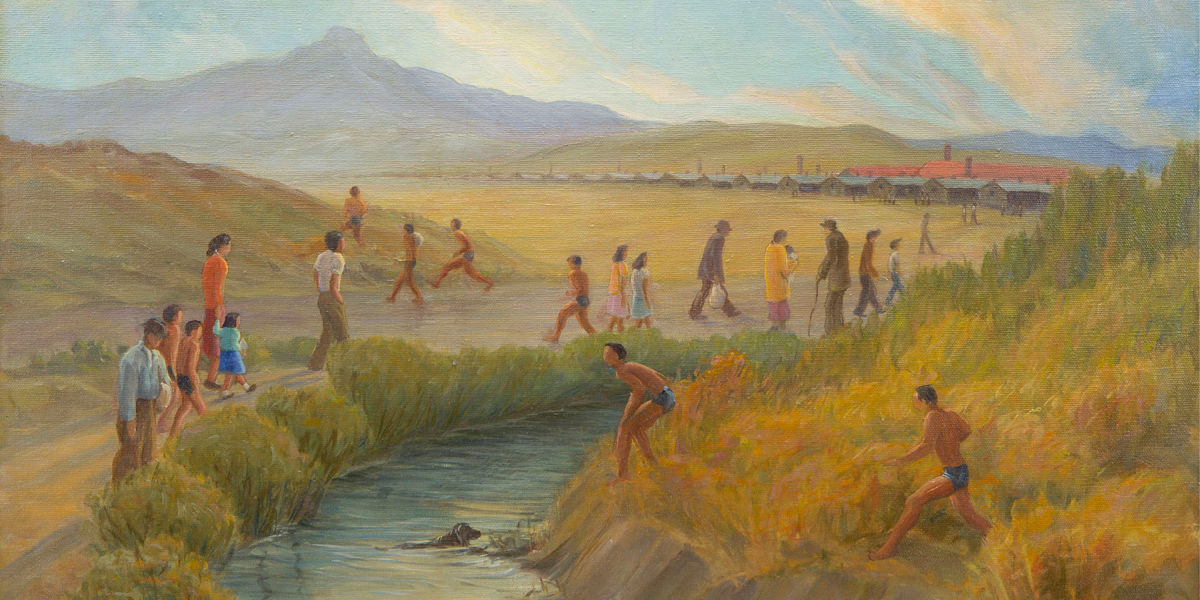
We will be sharing videos of the online programs presented in conjunction with Contested Histories and more! Please check back for additional videos.
Contested Histories Talk: Episode 1—Clement Hanami
Learn about the origins and creation of Contested Histories: Art and Artifacts from the Allen Hendershott Eaton Collection, from curator Clement Hanami, in this program and Q&A that was livestreamed on April 11, 2020.
Contested Histories Talk: Episode 2—Stories from the Road
Learn about what was involved in traveling Contested Histories from curator Clement Hanami in this program and Q&A that was livestreamed on April 30, 2020. He also shared the stories of some of the connections that he has made in tracking down more details about the artifacts in the collection.
Contested Histories Talk: Episode 3—Nancy Ukai
50 Objects/Stories Project Director Nancy Ukai joined Clement Hanami for a presentation and Q&A about the successful fight to stop the auction of the Eaton Collection and the efforts to preserve and learn more about the artifacts that are part of Contested Histories in this program and Q&A that was livestreamed on May 23, 2020. Ukai is a writer and researcher who helped lead the social media protest to stop the Rago auction of the Eaton Collection artifacts in 2015. She is co-administrator of the Facebook page Japanese American History: Not for Sale.
Building a Traveling Pop-Up Display
People often ask how do we travel delicate and fragile artifacts from the World War II incarceration experience around the country. In this short video, we show how we built the crates for the traveling pop-up display.
Connections in Little Rock, AR
Contested Histories traveled to the 2019 Jerome/Rowher Pilgrimage in Little Rock, Arkansas to engage Pilgrimage attendees. Organized by the Japanese American Memorial Pilgrimages, the event took place from April 11-14. Sharon Ideta Fukushima recognized her father, Takashi Ideta, in one of the photographs in the collection where he is standing by a nameplate at the Jerome concentration camp. She and her family came to see the display, bringing the original nameplate, and shared what this family connection means to them.
JCCCNC
JANM was honored to have the Japanese Cultural and Community Center of Northern California as the first site to host the Contested Histories pop-up display on June 23–24, 2018.
Contested Histories: Nisei Veterans Committee Memorial Hall in Seattle, WA
JANM visited the Nisei Veterans Committee Memorial Hall on November 24–25, 2018, where they met with Kunio Homma and Kumiko Hasegawa who are descendants of Yorozu Homma, the maker of the iconic chair that is part of the Eaton collection.
Contested Histories travels to NYC
JANM brought Contested Histories to the Noguchi Foundation and Museum Garden in Long Island City, New York on April 8–10, 2022, where it was presented in conjunction with the exhibition, No Monument: In the Wake of the Japanese American Incarceration. Christina Hiromi Hobbs and Genji Amino, co-curators of No Monument, talked about the exhibitions.
This project was funded, in part, by a grant from the U.S. Department of the Interior, National Park Service, Japanese American Confinement Sites Grant Program. Additional support was provided by George and Brad Takei, the Earle K. & Katherine F. (Muto) Moore Foundation, and Richard Sakai.
Media Sponsor: ![]()
This project was funded, in part, by a grant from the U.S. Department of the Interior, National Park Service, Japanese American Confinement Sites Grant Program. Additional support was provided by George and Brad Takei, the Earle K. & Katherine F. (Muto) Moore Foundation, and Richard Sakai.
Media Sponsor: ![]()

